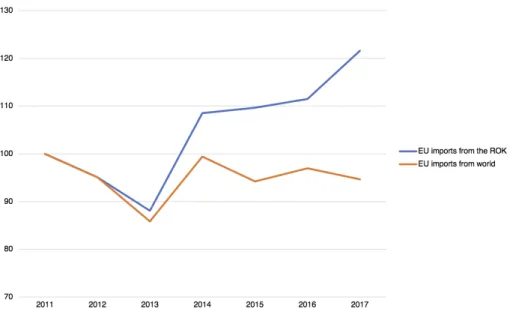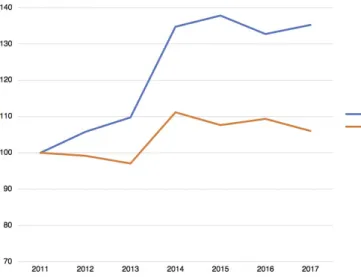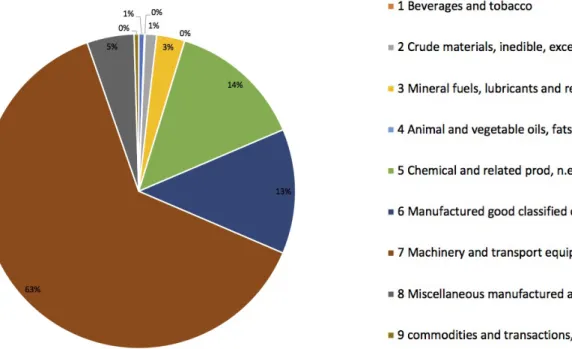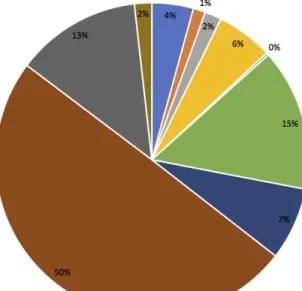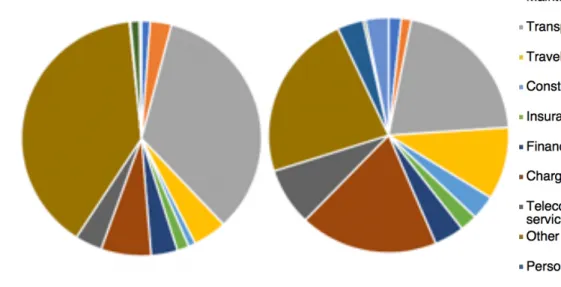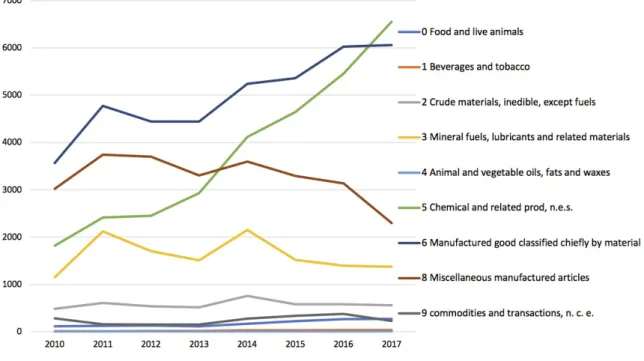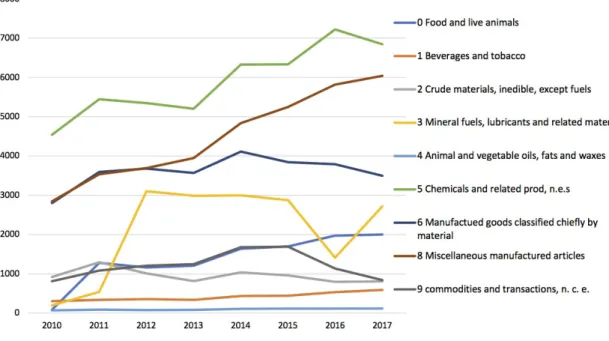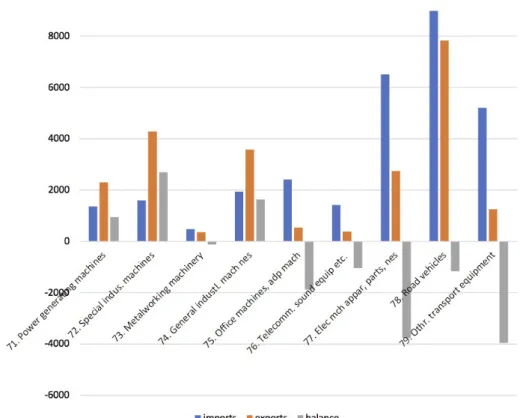The strength of bilateral relations between the EU and the ROK has a material and ideological basis. Last year, the EU was the second largest source of imports for the ROK (ranking only after China) and the third most important export market (ranking behind China and the United States). Bilateral trade between the EU and the ROK has experienced impressive growth in recent years.
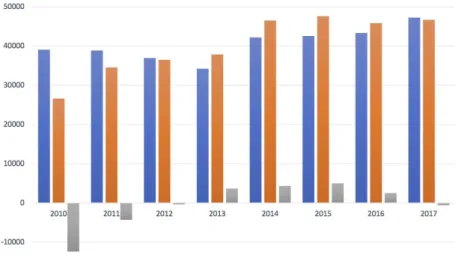
Free Trade Agreement
Although trade in goods is key to the EU-ROK trade relationship, trade in services has consistently reached around 15-20 percent of total bilateral trade over the past five years. Exports have increased by 70 percent.22 The EU records a significant surplus in services trade with the ROK. Outward flows of FDI were much larger, reaching 3.4 billion euros.23 Because FDI became the exclusive competence of the EU only on the basis of the Lisbon Treaty signed in 2007, the EU-ROK FTA does not contain an investment chapter (currently).24.
The EU-Korea Free Trade Agreement is seen as beneficial for both sides, although relatively more so for the EU. For example, slow GDP growth and sluggish demand in the EU and the depreciation of the euro against the South Korean won over the past five years have disrupted some of the expected and forecasted results. At the same time, sectoral development is also at work, such as the reduction of ROK production in key sectors due to excess capacity and supply, and the cross-border reorganization of production in sectors that are important in the competition between the EU and the ROK.33 It is interesting that ROK exporters, despite ROK's perception that the EU gains more from the free trade agreement, have a constant preferential utilization rate than European companies (there are also large differences between EU member states). with).
The EU (particularly the European Parliament) is unhappy with Seoul's progress on trade and sustainable development, especially when it comes to labor rights such as freedom of association. The EU is also keen to make progress on allowing EU meat exports to the ROK, which have been blocked since 2001 due to an outbreak of Bovine Spongiform Encephalopathy (BSE) in the 1990s.
EU-ROK trade in goods
Total EU imports of machinery and road vehicles (SITC section 7) have increased by 4 percent since 2010. Even though EU exports grew relatively much more strongly (65 percent) over the same period, the EU maintains a negative trade balance in this respect. Part of the explanation is the fact that in many sectors the EU was a more open market than the ROK before the conclusion of the FTA.
The automotive sector is, and has been for many years now, an important part of EU-ROK trade relations. The ROK is the world's fifth largest passenger car producer36 and the EU's third largest source of imports in this regard (after Turkey and Japan).37 The EU is an even bigger global player and ranks second in the list of global passenger car producers (with Germany, Spain, France, the United Kingdom and the Czech Republic as key players). Although the EU market for passenger cars has shrunk since 2010 as a whole, ROK car imports to the EU are increasing year on year.39 Discussions about market access issues for motor vehicles are recurring in the relevant FTA working group and in the Trade Committee – and are a major concern for the European car industry.
When the EU-Korea Free Trade Agreement was concluded, the EU feared that Korea would record large trade gains in the textile sector at the expense of EU producers.42 Although the EU maintains a trade deficit in the textile sector, the deficit has decreased significantly over time. In 2017, textile imports amounted to about 2.5 percent of all goods imports from the ROK.
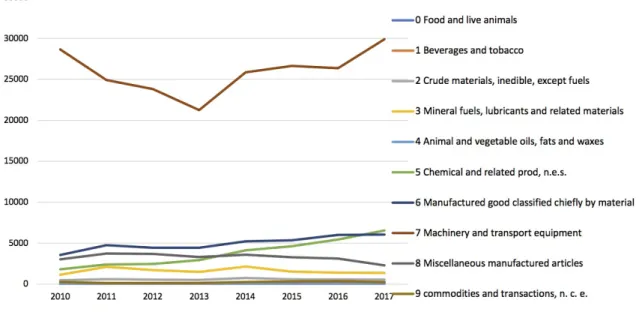
EU-ROK trade in services
POLITICAL AND SECURITY COOPERATION
Framework Agreement
At summits and dialogues, both parties repeatedly confirm the need to meet the 2°C limit on global temperature increase as set out in the Paris Agreement. The two parties have also created a partnership instrument (EU Emission Trading System to Korea) which aims to assist the ROK in its efforts to achieve its CO2 emissions reduction target and has a budget of EUR 3.5 million.52 . 5) Cooperation in regional and international organizations: Both parties repeatedly address the importance of cooperation in regional and international organizations. ASEM is also identified as an integrated platform for political dialogue and the Six Party Talks (2010) and NAPCI (2015) were recognized as important institutions for regional peace and security while in place.53 . 6) Development aid: Both parties share the view that it is essential to increase official development aid (ODA) activity in the least developed countries in order to contribute to international peace and stability.
The ROK has emerged as a donor in recent years, becoming a member of the OECD's Development Assistance Committee (DAC) in 2009. The European Commission's Directorate-General for Research and Innovation and the Korean Ministry of Science, ICT and Future Planning have held five joint S&T Cooperation Committees over time, the last of which took place in 2015.56. The above topics clearly reflect the global political and security environment and reflect current issues and emerging crises such as rising extremism in the Middle East, the DPRK's nuclear and ballistic weapons program, the threat of cybercrime and terrorism, and many more.
However, the analysis of press releases and joint communications from political dialogues, summits and other high-level meetings identified these topics as the particular areas in which both parties seek to work more closely together. The trend of the EU-ROK relationship in the field of political cooperation is to move towards strong ties to address threats to international and regional security.
The role of summits, political dialogues, and regular high-level meetings
EU: Donald Tusk, President of the European Council / Commissioner Cecilia Malmström (representing .. President of the Commission) ROK: President Park Geun-hye. In addition to summits, political dialogues are another form in which representatives of the EU and Korea regularly meet and discuss specific topics. The political dialogues that existed before the signing of the framework agreement were included in Article 3 of the framework agreement.
The political dialogues and consultations on specific topics listed above enable regular exchanges between EU and Republic of Korea representatives and policy makers. Dialogues, as stipulated in Article 3 of the framework agreement, are an important building block of the relationship between the EU and the Republic of Korea. The above list includes all categories of political dialogues that exist at the time of this report.67.
The Framework Agreement is the basis of all summits, political dialogues and high-level meetings since 2010 – hence the name – for all areas in which the EU and the Republic of Korea wish to strengthen cooperation. This is represented both by the contents of discussions at summits and high-level meetings, as well as by specific topics of political dialogues.

Crisis Management Participation Agreement
Both provide insight into the areas on which the ROK and European policymakers want to focus. The agreement largely governs cost and responsibility sharing for missions in which the ROK participates. The CMPA has been cited as a symbol of the close relationship between the EU and the ROK at virtually all of the summits, political dialogues and high-level meetings discussed above.
However, there is only one EU military operation in which the ROK has provided support: the Atalanta operation or European Union Naval Force (EU NAVFOR) Somalia, which has been deployed since 2008.69 Atalanta is an anti-piracy operation that protects ships and monitors fishing activities off the coast of Somalia. Formal ROK participation in this operation since February 2017 was the result of previous - not governed by agreements - cooperation between European and ROK naval forces in the Indian Ocean.70. The CMPA is thus often used to emphasize the particularly close relationship between the EU and the ROK.
In summary, the political and security relationship between the EU and the Republic of Korea is firmly anchored in the framework agreement, related summits, high-level political dialogues and regular meetings, and the CMPA. Security relations are more limited but highly symbolic given the level of trust between the EU and Korea.
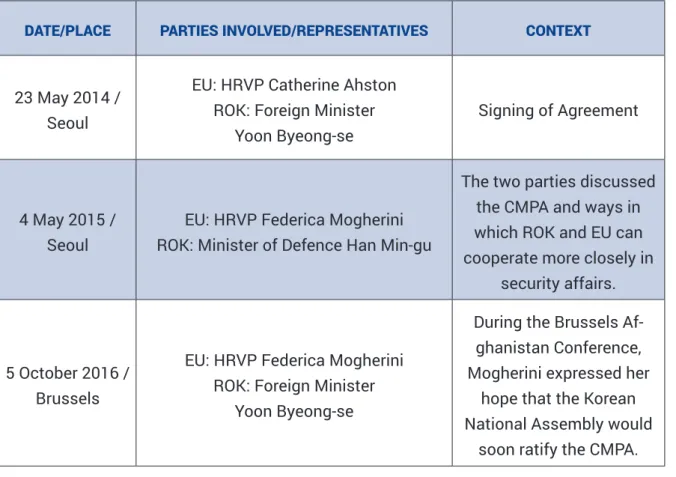
RECOMMENDATIONS
16 Council of the European Union, 'EU-Republic of Korea Summit, Joint Press Release' (Brussels, 6 October 2010). European Commission, Directorate-General for Trade, Report from the Commission to the European Parliament and the Council: Annual Report on the Implementation of the EU-Korea Free Trade Agreement, available at 35 European External Action Service, 7th meeting of the Trade Committee of the EU-Korea Free Trade Agreement, available at 47 Council of the European Union, EU-Republic of Korea Summit, Joint Press Release, (6 October 2010) available at 69 European Union Delegation to the Republic of Korea, the EU welcomes the contribution of the ROK warship to the EU naval anti-piracy operation, (Brussels, 21 February 2017), available at
